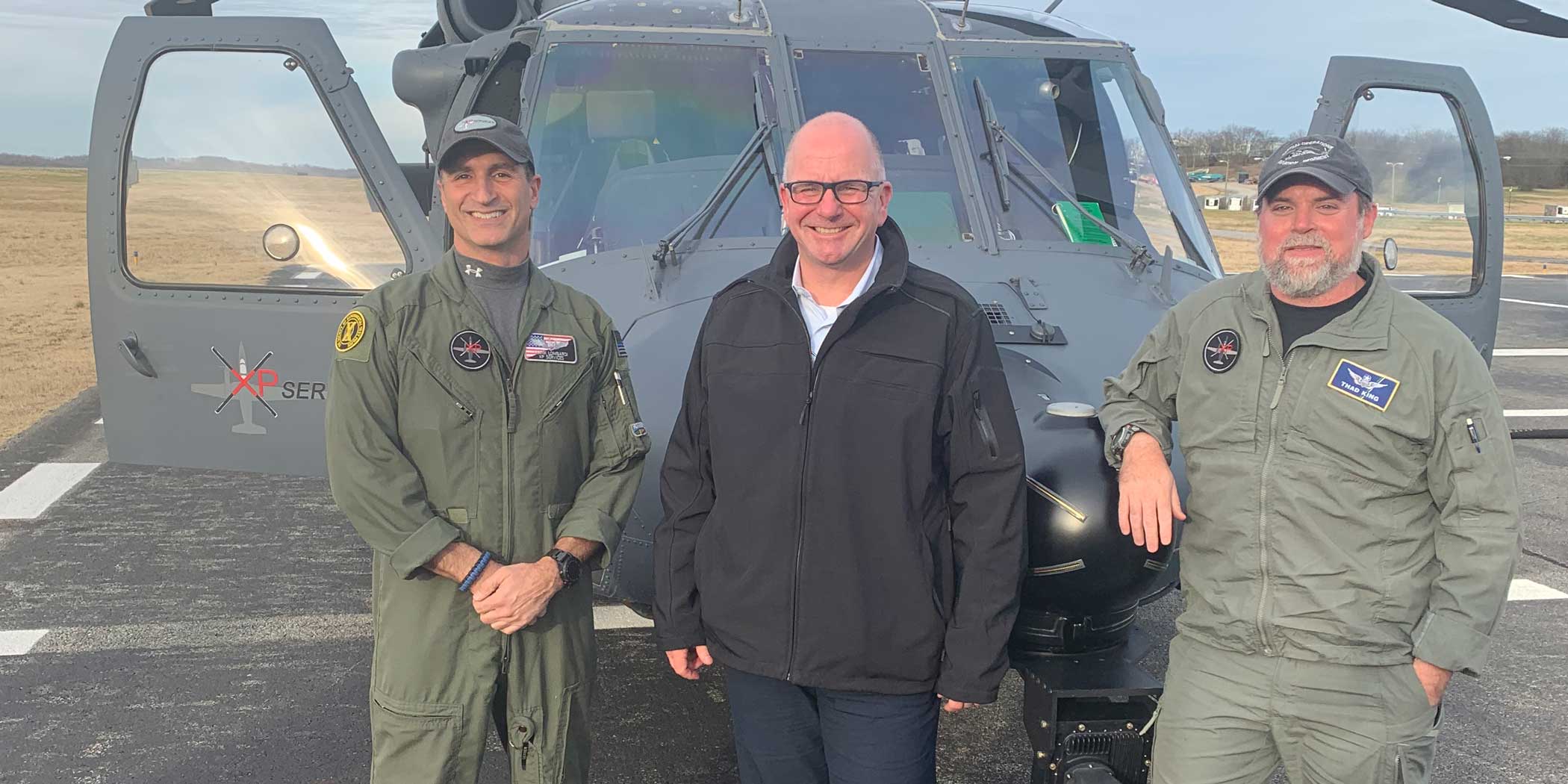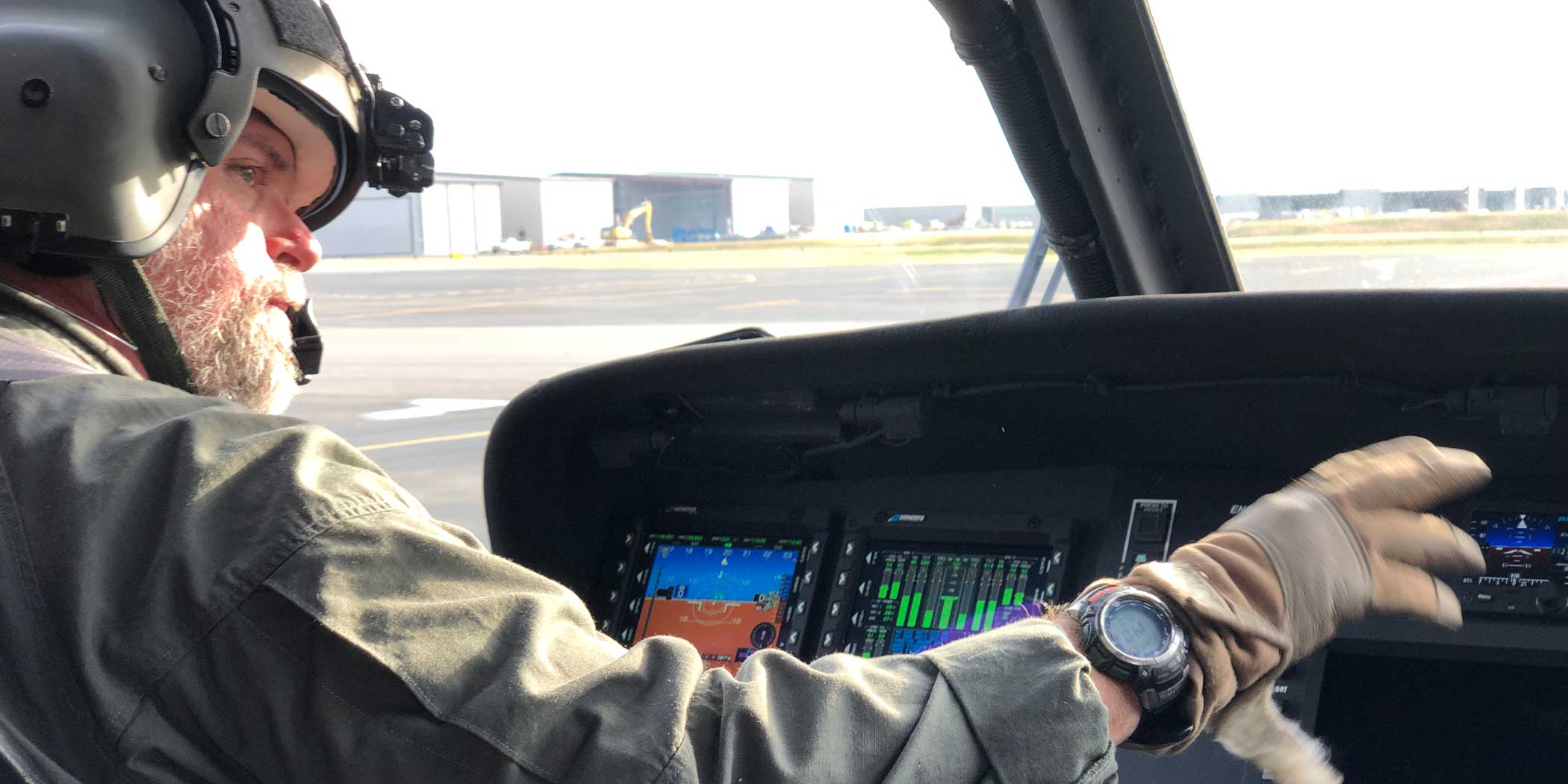Click Here to View This Page on Production Frontend
Click Here to Export Node Content
Click Here to View Printer-Friendly Version (Raw Backend)
Note: front-end display has links to styled print versions.
Content Node ID: 406293
“Big things in small packages” is an expression that loosely translates to, “the things we value the most and find of the highest quality are often small.” In the case of Genesys Aerosystems’ HeliSAS, a package that weighs only 15 pounds, it brings a powerful full-authority digital autopilot and stability augmentation system to light single- and medium twin-engine helicopters. Beyond its size, the greatest value of HeliSAS is that it dramatically enhances safety by reducing pilot workload and has the lifesaving potential to recover the aircraft to a safe and stable attitude if the pilot becomes spatially disoriented.
According to Genesys, “HeliSAS is designed to be on all the time and helps return the helicopter back to straight-and-level flight in the event it is inadvertently flown into an unusual attitude or if the pilot becomes disoriented due to a loss of visual references.” As an example, if the pilot becomes disoriented during an inadvertent flight into instrument meteorological conditions (IMC), releasing the cyclic control will automatically return the aircraft to a neutral attitude (zero degrees roll and two degrees nose-up); the pilot can then manipulate autopilot controls to return the aircraft to visual conditions. In these scenarios, HeliSAS acts as a digital safety pilot.
HeliSAS is both a stability augmentation system (SAS) and a two- or three-axis autopilot; there are two independent systems, a primary SAS/autopilot and a backup SAS/autopilot. The HeliSAS system is certified for either IFR or VFR use. The SAS provides basic pitch and roll stability for the helicopter to ease workload, and stability augmentation is available in all phases of flight. The autopilot provides a variety of pitch and roll modes to optimize flight path control for the pilot. Autopilot functions are available at airspeeds greater than 44 knots.
Components of HeliSAS include a primary and secondary flight control computer, HeliSAS control panel, and primary and backup electromechanical servos. In addition, there are several assorted buttons and switches installed on the cyclic and collective controls.
To learn more, AIN recently was invited to fly Genesys Aerosystems’ UH-60 Black Hawk technology demonstrator. The aircraft was outfitted with the latest Black Hawk avionics upgrade from Genesys, which transformed it into a completely integrated digital flight deck that included HeliSAS with an IFR-certified three-axis autopilot. Genesys and its project partner XP Services—a flight test and certification specialist—created an uncluttered, fully functional cockpit that is intuitive for the pilot. While the demo flight included a profile that rang all the bells and whistles, one of the most interesting aspects of the flight was the HeliSAS demonstration.
The pilots for this demonstration were XP Services flight test pilots Thad King and Frank Lombardi, each with significant rotorcraft experience and both graduates of a test pilot school. King would act as pilot-in-command in the left seat, while Lombardi would help navigate the flight profile from the observer seat. The AIN writer/pilot (me)—an airline pilot with no helicopter flight time—would fly from the right seat.
Prior to the flight, Genesys Aerosystems technical representatives briefed all things related to the Black Hawk avionics upgrade, while King and Lombardi provided a safety briefing and answered questions related to the flight profile. Lombardi gave a great summary of the benefits of HeliSAS and described SAS as “augmenting the Black Hawk’s automatic flight control system” and “giving the aircraft a bigger keel,” (something that I could relate to as a sailor).
During the flight, HeliSAS provided a significant stability improvement. King was able to demonstrate the Black Hawk’s flight characteristics with and without HeliSAS engaged and the automatic recovery feature. Of interest, King also allowed me to successfully take off, hover, and land the helicopter with the aid of HeliSAS, again, with my having no past helicopter flight time. Subsequent attempts to hover without HeliSAS would yield different results.
King demonstrated the automatic recovery feature by rolling the aircraft into a 35-degree bank and pitch to 7 to 8 degrees nose down. The recovery was initiated by releasing the cyclic control; within seconds the aircraft returned to a near level, stabilized flight attitude.
When the SAS mode is engaged in-flight, it is designed to maintain the pitch and roll attitude at the time of engagement within limits (10 degrees bank and nose down and 11 degrees nose up). If SAS is engaged above these limits, the system will trim the aircraft to the limiting values.

HeliSAS has a low- and high-airspeed protection feature when an autopilot pitch mode is engaged. If the airspeed decreases below the low-speed threshold, HeliSAS will pitch the aircraft down to obtain a set recovery speed. If the airspeed increases above the high-speed threshold, HeliSAS will pitch the aircraft up to obtain the set recovery speed. An aural warning tone will sound when these airspeed protection features are active.
Other demonstrations included manipulating the autopilot through the centrally mounted HeliSAS control panel. Roll modes include heading select and navigation mode (VOR, LOC, GPS, ILS, or a separate BC), while pitch modes include airspeed, altitude hold, or vertical navigation mode. On aircraft equipped with the Genesys IDU-680 displays (such as the Black Hawk), the autopilot can track search-and-rescue patterns as programmed in the integral FMS.
Genesys Aerosystems has delivered more than 1,000 HeliSAS systems to over 100 operators, including many aeromedical operators. HeliSAS is currently certified on the Airbus Helicopters H120, H125, and H130; Bell 206B/L, 407, and 505; Robinson R44 and R66; and Sikorsky UH-60 Black Hawk, and these are all aircraft that are often flown single pilot.

Big things do come in small packages. Genesys’s HeliSAS provides a lot of value at a relatively low cost and minimal weight penalty. As a digital safety pilot, the autopilot reduces workload, and its functionality rivals many high-cost systems, while the stability augmentation system features unique flight envelope protection and automatic recovery modes that are lifesavers.